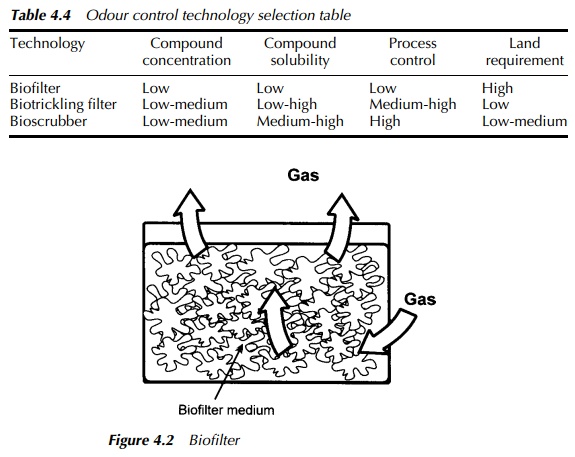Chapter: Environmental Biotechnology: Pollution and Pollution Control
Biofilters - Practical Applications to Pollution Control
Biofilters
As mentioned earlier, these were the first methods to be developed.
The system, shown schematically in Figure 4.2, consists of a relatively large
vessel or container, typically made of cast concrete, metal or durable
plastic, which holds a filter medium of organic material such as peat, heather,
bark chips and the like. The gas to be treated is forced, or drawn, through the
filter, as shown in the diagram. The medium offers good water-holding capacity and
soluble chemicals within the waste gas, or smelt, dissolve into the film of
moisture around the matrix. Bacteria, and other micro-organisms present,
degrade components of the resultant solution, thereby bringing about the
desired effect. The medium itself provides physical support for microbial
growth, with a large surface area to vol-ume ratio, high in internal void
spaces and rich in nutrients to stimulate and sustain bacterial activity.
Biofilters need to be watered sufficiently to maintain optimum internal
conditions, but waterlogging is to be avoided as this leads to compaction, and
hence, reduced efficiency. Properly maintained, biofilters can reduce odour
release by 95% or more.

Related Topics